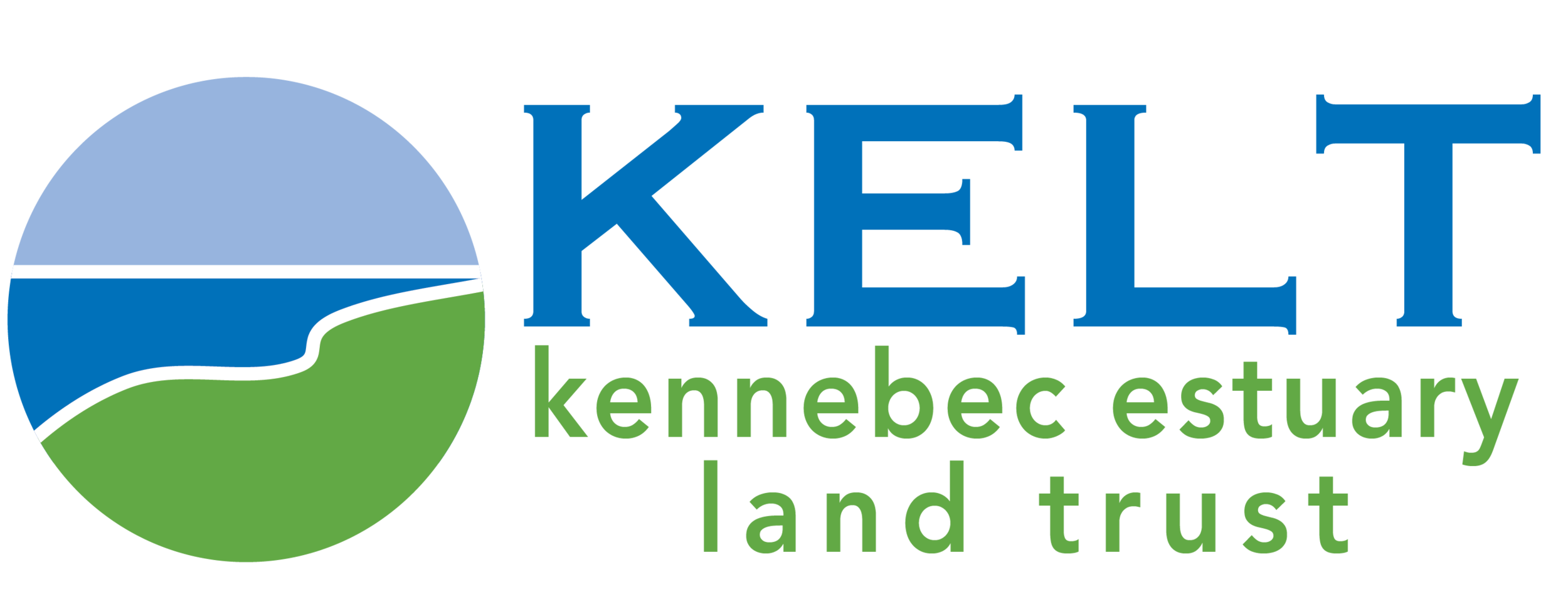Thorne Head Preserve
In 2000, KELT purchased the Preserve with the generous support of many individual contributions and a grant from the Land for Maine’s Future Program and the Maine Outdoor Heritage Fund.
The trails at this popular near-town property are open free of charge to the public from dawn to dusk. Dogs are welcome if leashed.
Help us protect what you have come to enjoy. Natural areas are delicate; foot traffic only, no camping, fires, or motorized vehicles. Please respect boundary signs. Enjoy your visit!
View from the mushroom cap, 1998
Murder's Cave
Thorne Head History
Thorne Head has been at the center of watershed activity since the Abenaki traded along the river’s highway and gathered wild rice along its shores.
1640
Abenaki deeded land to the first European settlers; one of the most important exports was great white pine logs, mast stock destined for the King’s navy. Thorne Head was logged into the twentieth century. The Preserve became pasture land; marked by the old stone walls you see.
1751
Michael Thornton, resided on Thorne Head.
1752
Old Country Road (present day High St.) is extended through Thorne Head to the first licensed Kennebec River ferry, probably a rowed gundalow about 20 feet long. You follow the original road to the fresh water marsh.
1883
Ne’er do well sailors hide out on Thorne Head. Murderer’s Cave may be visited today to recall the unfortunate killing of a Bath constable during a downtown robbery attempt. The culprit was captured and hanged.
1993
Inland Fisheries and Wildlife Critical Habitat Survey maps Thorne Head as high value habitat. Bath Comprehensive Plan notes this special area.
1998
KELT begins drive to buy Thorne Head and create a preserve for wildlife and scenic purposes.
2000-2010
Thorne Head Preserve opened in March. The Whiskeag Trail opened extending 5 miles from Thorne Head to the Bath YMCA overseen by Bath Trails.
Ecology of Thorne Head
As you enjoy Thorne Head’s spectacular waterfront and forest, look for 6 natural features that support a wide variety of flora and fauna on the Preserve. Stop, look and listen at each one to discover more than 100 plant species and the birds they attract. Deer, fox, raccoon, and mink are visitors as well.
6 Natural Features Of Thorne Head
Fresh Water Marsh: Just north of the main gate, this habitat supports migrating birds, feeding ducks, and is home to aquatic amphibians.
Mixed Woods: Old white pine, hemlock, oak and maple trees shelter migrating warblers and nesting birds requiring unbroken large tracts for protection. Owls hoot from woodland perches. Bald Eagles frequent tall trees at the water’s edge.
Vernal Pools: Spring Peepers, Wood Frogs and Spotted Salamanders lay eggs in pools that disappear in late spring, aiding survival of species that would be fish food in permanent ponds.
Tidal Wetlands: A highly productive ecosystem and habitat for many types of wildlife including waterfowl and wading birds. Thorne Head wetlands are home to two endangered plant species that thrive in diurnal inundations, parker’s pipewort, and estuary bur-marigold. Wild rice attracts thousands of migrating ducks in late summer and fall. Fish fry seek protection in the wetlands.
Riparian Areas: Land adjacent to waterways is used by 85% of Maine’s vertebrates. Amphibians populate the North Creek Outlet, a stream that may be viewed from the wooden foot bridge shown on the map.
Kennebec River Estuary: An estuary is the area of a river system affected by marine tides. The Kennebec estuary is known for 9 anadromous species; those inhabiting the river for part or all of their lives, including striped bass, now part of a world class fishery, and short nosed sturgeon, a protected, endangered species. Sturgeon may be recognized by the bony external shields along flank and back. You may see these fish breach in the fast flowing currents.
Conservation land is significant for ecological, economic, wildlife, and recreational purposes. Forested river banks prevent oxygen depleting runoff that lowers water quality. Estuaries have important economic value as nursery grounds for 2/3 of the nation’s commercial fish and shellfish.
- Driving Directions -
In Bath, go north on High Street, which dead ends into the parking lot of the preserve. View Map
Share what you see at Thorne Head!
Use iNaturalist to document the plants and animals you see while wandering through Thorne Head’s trails. The observations you make will appear below, use the tool to check out what people have already recorded!









